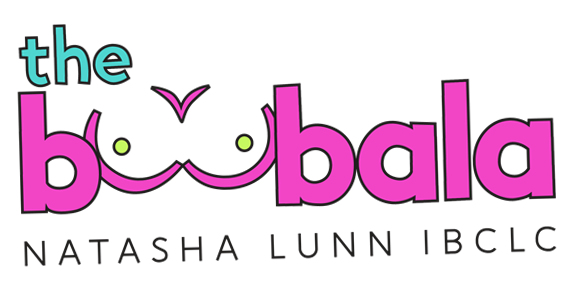Page Content
- Will pumping after breastfeeding increase supply?
- How soon after breastfeeding should I pump?
- Does pumping every 2 hours increase milk supply?
- What is the 3 month breastfeeding crisis?
- What is the 5 5 5 rule for breast milk?
- How to start pumping after exclusively breastfeeding?
- How do I combine my breastfeeding and pumping schedule?
- Does breastmilk lose nutrients when pumped?
- What are the weird symptoms after stopping breastfeeding?
- Will my milk dry up if I only nurse at night?
Understanding the Timing for Breast Pumping After Breastfeeding
When it comes to the delicate balance of breastfeeding and pumping, timing is crucial for both milk supply and the overall breastfeeding experience. New mothers often wonder how long they should wait to pump after breastfeeding, and the answer can vary based on individual circumstances and goals.
Initial Recommendations
For mothers who are just starting their breastfeeding journey, experts generally recommend waiting two to four weeks before introducing pumping. This period allows the mother’s milk supply to establish itself and ensures that the baby develops a strong breastfeeding routine. During this time, the baby’s natural sucking rhythm is essential for stimulating milk production, which a pump cannot replicate effectively.
Once you feel ready to start pumping, the best practice is to pump immediately after breastfeeding. This approach not only helps to empty the breasts more completely but also signals the body to produce more milk. Many experts suggest pumping for about 10 to 15 minutes after nursing to maximize milk extraction.
Timing Between Sessions
If you are considering a pumping schedule, it’s advisable to plan for at least an hour between the end of your pumping session and the baby’s next feeding. This interval helps ensure that the baby has enough time to feed effectively and that the mother’s milk supply remains robust.
Frequency of Pumping
The frequency of pumping can also depend on various factors, including the mother’s return to work or the need to store milk. For mothers who are exclusively breastfeeding, it’s often recommended to pump every 2 to 3 hours to maintain supply, especially if they are away from the baby.
Conclusion
In summary, the ideal time to wait before pumping after breastfeeding is typically right after a feeding session, especially once the initial weeks of breastfeeding have passed. This strategy not only supports milk supply but also helps mothers manage their breastfeeding and pumping routine effectively. As always, individual experiences may vary, so it’s important for mothers to listen to their bodies and consult with healthcare professionals for personalized advice.
Will pumping after breastfeeding increase supply?
Feed every 2 hours during the day and every 3 to 4 hours at night (at least 8 to 12 times in 24 hours). If your baby will not latch, use a good quality double electric breast pump to increase milk production. Pumping after breastfeeding signals your body to produce more milk.
How soon after breastfeeding should I pump?
about 30 minutes
How long should you wait to start pumping after feeding? “Waiting about 30 minutes after you’re done with breastfeeding is helpful, as well,” Roberts says.’);})();(function(){window.jsl.dh(‘_4BlZ82nK5Wpjgb76N6QDw__27′,’
Does pumping every 2 hours increase milk supply?
Pump more often, from both breasts
Many women wonder how often they should pump. A general guideline is to pump every three hours. But if you’re trying to produce more breast milk, you can: Try pumping both breasts for 15 minutes every two hours for 48-72 hours.
What is the 3 month breastfeeding crisis?
As you may have read in my other blog about a baby’s breastfeeding crisis, a breastfeeding crisis, sometimes called a growth spurt, is a common phrase used to describe a phase where mothers may encounter significant breastfeeding challenges, typically related to an increase in milk demand from the baby.
What is the 5 5 5 rule for breast milk?
Something I recommend to moms is the 5-5-5 rule. Try and use milk within five hours at room temperature, five days in the fridge, and by five months in the freezer.
How to start pumping after exclusively breastfeeding?
Once breastfeeding is well established – usually after about four weeks – begin pumping after one feeding a day where your breasts still feel a little full. Remember you are pumping “leftovers” and should only expect a small amount. Freeze that first pumping immediately.
How do I combine my breastfeeding and pumping schedule?
According to La Leche League, a good schedule for a breastfeeding and pumping mom who works an 8-hour day would be to nurse her child before going to work, pump mid-morning, at lunchtime, and then mid-afternoon. She could then nurse her baby upon returning home.
Does breastmilk lose nutrients when pumped?
According to the CDC (Centers for Disease Control and Prevention), freshly expressed breast milk can be safely kept at room temperature (77°F or colder) for up to 4 hours. Generally, when freshly pumped, breast milk is at its peak regarding nutrients.
What are the weird symptoms after stopping breastfeeding?
Other Strange Body Ailments Can Happen
Some might experience headaches or migraines, while others feel exhausted or even dizzy immediately after weaning. Another common post-weaning issue? Acne. Big hormone changes can really throw your body for a loop.
Will my milk dry up if I only nurse at night?
You’re right, it is supply and demand so yes, eventually you’ll stop producing as much milk at night but if you’re still consistently nursing during the day then your body will continue to produce milk at those times.

